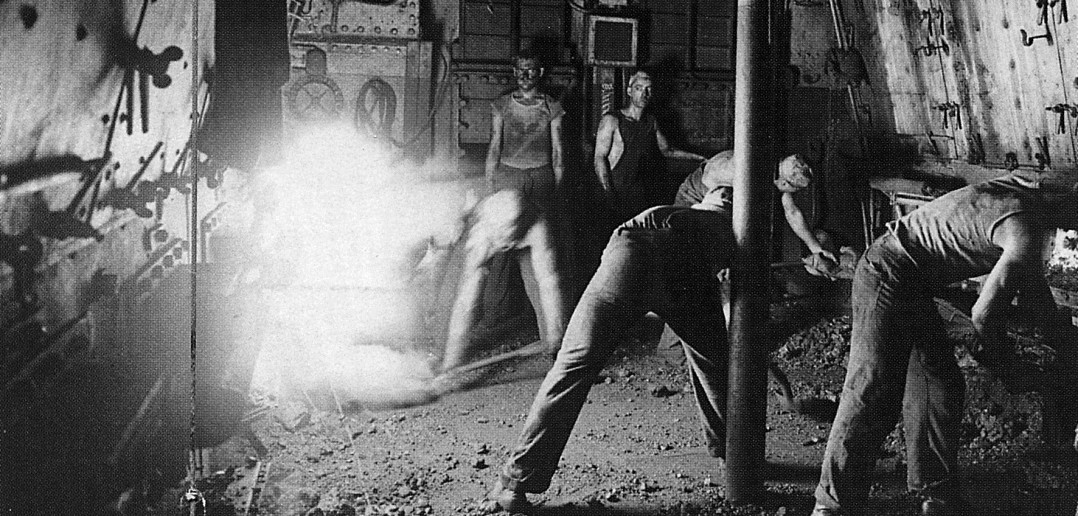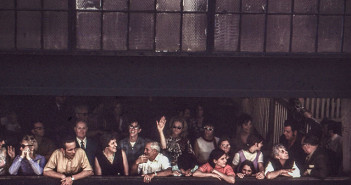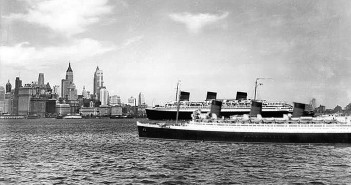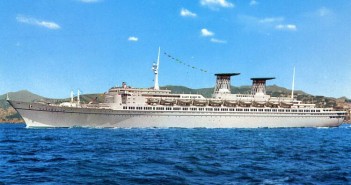My grandfather, Charles Edwards, was a stoker. I know this fact not from any personal contact with my grandfather (who died about a decade before I was born), but from my father’s birth certificate, which shows “stoker” as his father’s occupation.
My grandfather was in the Royal Navy at the time my father was born (1922). I know from family sources that he also served on various maritime vessels.
Stokers were, or course, the men who shoveled coal into a ship’s boilers. Every ocean liner had these men on board, toiling far below deck and far away from all passengers, first class through steerage. It was a dreadful existence, truly hell on earth.
Here’s how John Maxtone Graham describes the work in his classic book on ocean liners, The Only Way to Cross: ”Even at the best of times, stokers worked under appalling conditions: stripped to the waist, coal dust and ashes adhering to the sweat of their bodies, their feet shod in clogs as protection against the red-hit debris underfoot,” Graham writes. “In rough weather, firemen learned to stoke as the bow plunged down, slamming the door shut as the ship rose again, to avoid a shower of red hot coals on their feet.” As Graham observes: “It was a soul-destroying occupation.”
Members of “the black gang,” were known for their heavy drinking and short tempers. Graham noted that Charles Lightoller, Titanic’s second officer, who survived the disaster, would talk of the engineering officer who tried to break up a black gang fight and then mysteriously vanished. Word spread that the unfortunate mediator was knocked unconscious with a shovel and incinerated in a furnace.
I have only one picture of my grandfather, and when I showed it to my wife she said he looked “like something out of Charles Dickens.” I don’t think she meant that he looked like David Copperfield. I think about my grandfather from time to time, particularly when on a luxury vessel like Queen Mary 2. What would he think of his grandson, sitting at a table with fine food, wines and linens? Would he be pleased or would he want to knock me on the head with a shovel and then throw me into a furnace?
A stoker works four hours at a stretch, and during that time the temperature of his surroundings varies from 120 degrees to 160 degrees Fahrenheit. One stoker usually has four furnaces to attend to, and while feeding one furnace a man has to be extremely careful or his
arm may be burned by the furnace behind him.As a rule a man is occupied about three minutes at each furnace, and directly he has finished he rushes to the air pipe and waits until his turn comes again. The intense heat of the furnaces has sometimes rendered stokers temporarily insane, and there are many cases on record where they have jumped overboard after having made their way to the deck.
John Colgate Hoyt, Compiler, “The Stoker.” In Old Ocean’s Ferry: The Log of the Modern Mariner, The Trans-Atlantic Traveler, and Quaint Facts of Neptune’s Realm. A Collation of Odd and Useful Information for Nautical Travel and Strange Features of the Sea, for Landsman and Mariner, New York: Bonnell, Silver & Co., 1900.





